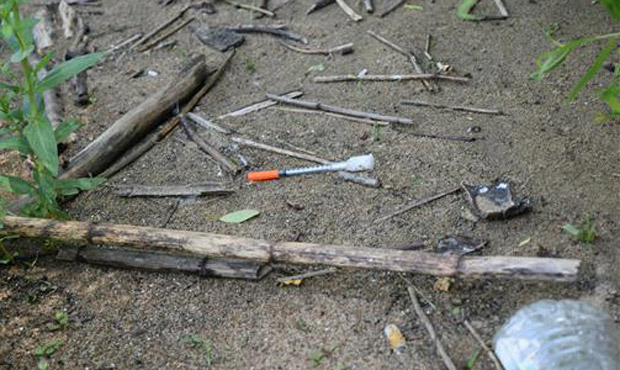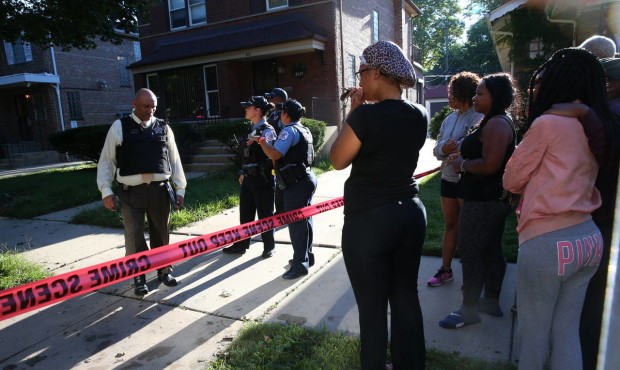Local News
Remembering the Whidbey air crew detained in China
 On April 1, 2001, a U.S. Navy EP-3 ARIES "surveillance plane" was flying in international airspace along the coast of China over the South China Sea and monitoring communications and other electronic transmissions. Then a Chinese fighter jet got a little too close. (AP)
On April 1, 2001, a U.S. Navy EP-3 ARIES "surveillance plane" was flying in international airspace along the coast of China over the South China Sea and monitoring communications and other electronic transmissions. Then a Chinese fighter jet got a little too close. (AP)
In the early days of the first term of President George W. Bush, and just months before the terrorist attacks on 9/11 defined the subsequent era, a Whidbey Island-based crew of a U.S. Navy aircraft was at the center of an international incident.
On April 1, 2001, a U.S. Navy EP-3 ARIES “surveillance plane” was flying in international airspace along the coast of China over the South China Sea and monitoring communications and other electronic transmissions. In the air not far from the American prop plane were two Chinese fighter jets. And then one of the jets got even closer.
ABC News had one of the first reports of what happened next. The news wasn’t good.
Related: Boeing’s Stratoliner began and ended with a crash
“There are concerns about national security and a U.S. military flight crew that was forced to make an emergency landing during a surveillance flight along China’s southern coast,” said ABC anchor Carole Simpson. “The U.S. spy plane was equipped with sophisticated intelligence-gathering technology.”
Relations between the U.S. and China were already somewhat strained before this incident. In 1999, the U.S. had mistakenly bombed the Chinese embassy in Belgrade during NATO operations in the Balkans, leaving three dead and 20 wounded.
On board the four-engine EP-3 that day in April 2001 were 24 American crew members. One was David Cecka, an electronics technician and the only native Washingtonian on the plane. Seated well back from the cockpit of the plane as the Chinese jets flew nearby, Cecka could tell something was wrong.
“The way we do business when we fly you’re pretty much occupied 100 percent of the time with your gear and everything. I remember I looked up and down the tube of the aircraft and nobody was sitting at their pods anymore, everybody was up and looking out windows,” Cecka recalled. “I remember one of my officers came up to me and was like, ‘Hey, you need to get off pod and go take a look out the window. You’ll probably never see anything like this again.’ I was like, wow, this is the first time anybody told me I could get off of my equipment during a mission.”
Cecka got up and looked out the nearest window on the port (or left) side of the EP-3.
“I remember seeing one of their Chinese fighters flying with us, and his wing was over our wing,” Cecka said. “I’ve never been that close to another airplane, ever. Even in formation flights they don’t get that close.”
Cecka says he knew that the EP-3 and the whole crew were in danger. Moments later, the Chinese fighter jet struck the EP-3’s left outboard propeller. Cecka felt and heard the collision right away.
“I likened it to if you’ve got a fan a big box fan blowing and you take a wooden pencil and jam it in there. That’s what it felt like on a massive scale,” Cecka said. “The plane just shook like bang-bang-bang-bang, and I got knocked to the ground.”
Investigation of the incident later determined that the Chinese pilot had accidentally struck the propeller of the EP-3 with the tail of his jet. He tried to recover but was unable to maneuver safely away from the American plane.
“Our engine pretty much chewed up the back end of his aircraft, and [the Chinese jet] stalled out,” Cecka said. “His nose came up and swooped down across the nose [of the EP-3] and basically tore the nose of our aircraft off.”
What followed next was several terrifying minutes for Cecka and the rest of the crew.
“[Our] plane, I don’t wanna say flipped, but definitely the nose went down and kinda twisted. There was so much G-force pulling everybody that I got pinned to the ground,” Cecka said. “I couldn’t move, and couldn’t even get in my parachute.”
Another crewmember near Cecka was pinned to the ceiling of the plane by the force of the rapid descent. “He couldn’t move, and we just kinda stared at each other as were going down.”
Cecka says he could hear pilot Shane Osborne calling “mayday” as the plane fell, and that an odd feeling came over him.
“I’d made my peace with God,” Cecka said. “It’s weird how that happens, ’cause it’s easy to say, but after the panic and the terror, you just sort of you make your peace. I had kind of a peaceful feeling come over me and I couldn’t move.”
Cecka says the EP-3 fell nearly 15,000 feet toward the South China Sea.
But then, Osborne somehow pulled the plane out of its dive.
“I don’t even remember the transition from when we pulled out of it, I just know that at some point we were level and I could move again,” Cecka said.
But the EP-3 and 24 crewmembers weren’t out of the woods yet.
“The plane was just shaking violently,” Cecka said. “We’d lost our Number One engine pretty much and all the pieces of the other plane that had fallen off had pretty much wiped out the propeller on our Number Two engine.”
Cecka says other damage to the EP-3, including the loss of the nose section, created a tremendous amount of drag. As the nose of ripped off, it also tore holes just ahead of the cockpit.
“There was a lot of air just screaming through the plane, and there’s tons of vibration and lots of noise and the air rushing around,” said Cecka.
Somehow, in spite of the ear-splitting noise, word got passed: the crew was going to bail out.
“Everybody got their parachutes on and prepared to jump out of the plane. [But then], the pilot and copilot and flight engineer determined they were able to control the plane enough that we wouldn’t need to bail out,” Cecka said.
That meant getting ready for ditching the EP-3 in the South China Sea. Cecka and the other crewmembers quickly set about stowing all the loose gear that had been thrown about in the rapid dive. Cecka says that’s when all the hours and hours of training kicked in.
“You don’t really think about what could happen in trying to land an airplane on the water. You just follow your training and work as a team,” Cecka said.
Everybody was strapped in and waiting to ditch. That’s when Cecka had time to think about what came next.
“Fear sets in, and it’s a whole ‘nother feeling, ‘ cause now you just wanna get off the plane, and you’ve got to be sitting there strapped in with your helmet on, waiting for the plane to hit the water,” Cecka said. “That was a pretty rough moment.”
As Cecka braced for a water landing, he suddenly began seeing “mountains and hills and green stuff” out the window of the EP-3. “So I was completely confused until we banked really hard, and [then] landed really hard,” Cecka said. “But the time, it felt like the best landing I ever had,” he said, laughing.
The EP-3 had landed at the remote Lingshui Chinese air base on the southern part of China’s Hainan Island. For David Cecka and the other crewmembers, an emergency landing in foreign territory was an entirely new experience.
“They walked us [from the runway] into a kind of a rundown open-air barracks,” Cecka said. “We were under armed guard, with weapons with bayonets, and so it was definitely an uncomfortable situation. But they did treat us with respect.”
Cecka says that on Hainan Island, they were fed three meals a day, and were allowed to move freely around inside the barracks and talk to other crewmembers. In Beijing and Washington, DC, diplomacy kicked into gear as the Chinese and American governments reacted to the situation and tried to figure out what to do.
The EP-3 was loaded with high-tech surveillance gear, and it’s unclear how much of it was able to be destroyed by the American crew before the Chinese boarded the plane. Cecka said he’s not allowed to talk about that aspect of the incident.
In the midst of the crisis, President George W. Bush expressed condolences to the family of the missing Chinese pilot and emphasized his interest in seeing the Whidbey crew return.
“Our prayers are also with our own servicemen and women, and they need to come home,” President Bush said. “The message to the Chinese is we should not let this incident destabilize relations. Our relationship with China is very important. But they need to realize it’s time for our people to be home.”
Meanwhile, back on Hainan Island, the reality was sinking in for David Cecka.
“The lowest it ever got was when we transitioned from realizing that we weren’t going to be going home right away,” Cecka said. “We realized it was going to be a detention scenario, and that hit a lot of people pretty hard.”
The Chinese government said that the EP-3 had violated China’s airspace, which the U.S. said only occurred after the plane was struck and sought a safe place to land on Chinese territory. Regardless of who was at fault in the incident, the Chinese had lost a pilot (named Wang Wei), and were intent on conducting an investigation and questioning the members of the EP-3 crew. Cecka and the other crewmembers cooperated with the investigation, to a point.
Back on the international stage, a Chinese diplomat appeared on CNN and said, “The United States should apologize for this incident and should act in an apologetic fashion. In other words we would like to see a speedy settlement of this issue, but the ball is not in our court.”
In response to China’s demands for an apology, Vice President Dick Cheney did not mince words.
“We’ve made it very clear we don’t think an apology is in order,” Cheney said. “The plane and the crew are in China because of the accident that occurred in international air space. We have a right to be in international airspace, that’s really not an issue here from our standpoint. We had no choice the crew had no choice but to land on Chinese territory at an airbase because of damage to the aircraft. The question now is resolving the matter in an effective fashion so that we can get on with our business so that the crew will be returned,” said the Vice President.
Meanwhile, David Cecka and the 23 other Americans were getting used to being in detention. They even got somewhat used to being questioned and even interrogated about the details of the incident, and to being subjected to Chinese propaganda. But then, a few days in, the crew decided to push back with a good old-fashioned mind game of their own.
“We just decided to take control,” Cecka said and orchestrated some basic drills. “During the middle of one of their propaganda speeches, somebody [from the EP-3 crew] called ‘Attention to Quarters.’ Everybody stood up and moved the desks back and we all got in formation.”
Cecka says their hosts were surprised and taken aback, but did nothing to respond.
“[The Chinese] all freaked out, they didn’t know what we were doing. It was one of those moments where we had a small little victory without crossing too many lines with them and making an incident,” Cecka said. “But it was little things like that that helped us stay together and keep our morale real high.”
As detention of the Whidbey crewmembers neared the 10-day mark, behind-the-scenes diplomacy continued, and the situation started to thaw. Finally, U.S. ambassador to China Joseph W. Prueher sent a letter to Chinese Minister of Foreign Affairs Tang Jiaxuan.
“Both President Bush and Secretary of State Powell have expressed their sincere regret over your missing pilot and aircraft,” Ambassador Prueher wrote. “Please convey to the Chinese people and to the family of pilot Wang Wei that we are very sorry for their loss.”
After the letter from the U.S. was received, China’s official Xinhua news agency reported a slightly different version of the story. “Minister Tang emphasized that ever since the US military reconnaissance plane rammed into and destroyed a Chinese military plane,” the Xinhua report said, “the Chinese side has all along handled this incident with calmness and restraint and in accordance with international law and the provisions of relevant laws of China.”
Regardless of how the news was reported in China, for David Cecka and the rest of the Whidbey crew, the next steps came quickly and rather unexpectedly.
“Out of the blue they announced that we were gonna be getting on the plane that day,” Cecka said. “It was a pretty euphoric moment.” The 11-day detention was over.
Thousands of people gathered at NAS Whidbey a few days later for the crew’s return to their home base. Governor Gary Locke and other dignitaries were on hand, along with friends and family of the crew, and, at least, one man dressed as Uncle Sam. Cecka was clearly moved by the experience.
Thousands of people gathered at NAS Whidbey a few days later for the crew’s return to their home base. Governor Gary Locke and other dignitaries were on hand, along with friends and family of the crew, and, at least, one man dressed as Uncle Sam. Cecka was clearly moved by the experience.
“It is so completely overwhelming, that’s the only way I can describe it,” Cecka said, being met by his wife and infant son, parents and grandparents. “And having the entire country wrap their arms around you … it’s hard to really put in words how that is, and how it feels. It was an amazing moment, an absolutely amazing moment.”
As part of the easing of the crisis, the Chinese government agreed to allow the damaged EP-3 to return to the U.S. a few months later. The plane arrived by way of Manila and Honolulu at Dobbins Air Force Base in Marietta, Georgia in July 2001. However, it did not fly under its own power.
With the blessing of the Chinese, a U.S. Navy crew dismantled the EP-3, boxed it up and sent it home in the belly of a giant Russian-made air freighter.







































Comments